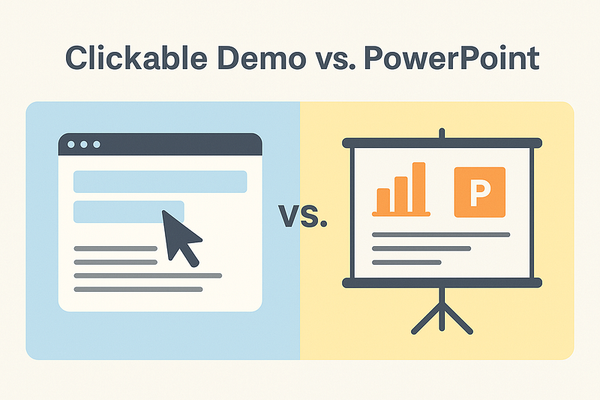From Prototype to Platform: The Reality of Scaling Agentic AI
Agentic AI demos are impressive. But turning them into reliable, sustainable enterprise systems takes more than a prompt and agent builder
Agentic AI demos are impressive. But turning them into reliable, sustainable enterprise systems takes more than a prompt and a workflow builder.
In my last post, I wrote about Artificial Confidence… the illusion of maturity that makes AI systems appear more reliable than they really are. It’s that moment when a model sounds fluent, acts certain, and convinces an entire room it’s production-ready, even though its reasoning is still probabilistic and its safeguards are barely tested.
Nowhere is that illusion more dangerous than in the rush toward agentic AI.
Like many CTOs, I’ve been exploring agentic AI technologies, running experiments, building pilots, and learning what it really takes to deploy these systems inside large, complex organizations.
The promise is compelling: autonomous “agents” that can reason, plan, and act across systems to automate knowledge work. It’s easy to get swept up in the demos… drag-and-drop builders, natural-language workflows, and claims of “no-code intelligence.” But once you move beyond proof-of-concepts and start integrating these tools into real infrastructure, the reality looks very different.
In many ways, I’m seeing the same patterns we experienced during the digital-transformation era… when organizations raced to automate processes using Intelligent Document Processing (IDP), Robotic Process Automation (RPA), and low-code integration platforms (iPaaS). Those technologies promised speed and simplicity but often created fragile ecosystems held together by connectors, scripts, and vendor-specific logic. Over time, teams realized that “no-code” still required real engineering discipline to scale, secure, and sustain.
Agentic AI is following a similar trajectory. Behind every promising workflow is a hybrid system: a mix of large-language-model agents, deterministic logic, glue code, and external APIs. These architectures can deliver real value… but only if they’re built with the same rigor, version control, and lifecycle management we apply to any enterprise software platform.
That’s the real question leaders should be asking when evaluating agentic AI platforms…Not how fast can I build an agent, but how maintainable, governable, and extensible will it be over time?
The Hidden Complexity of Agentic AI Pipelines
Agentic AI systems look simple on the surface… a user gives an instruction, and an agent performs a multi-step process across tools or data sources. But under the hood, these pipelines are intricate.
A single workflow might chain together multiple models (LLMs, embeddings, classifiers), integrate with APIs or databases, handle authentication, and orchestrate memory or context across steps. Every dependency introduces fragility: SDKs change, APIs fail, models evolve.
This complexity isn’t a problem, it’s a reality. The same way early RPA bots failed when a web form changed, today’s agentic systems can falter when a model update shifts its reasoning. Without strong engineering foundations like testing, versioning, and observability, organizations risk building another generation of “shadow automation” that works great in demos but collapses in production.
And yet, early success often breeds artificial confidence. When the first few automations work, teams assume the system is stable. The interface looks polished, the metrics look good, and leadership believes the hard part is over. But just because an agent acts confidently doesn’t mean it’s under control.
The Sustainability Problem
Many agentic AI platforms prioritize speed and accessibility at the expense of long-term sustainability. The assumption is that building an “agent” should be simple. And at first, it is… until you try to maintain it.
Imagine you’ve built an AI pipeline that automates inbound processing, validation, and storage of customer data. It might handle correspondence, product feedback, or the first line of customer service triage. It’s vital work… something that needs to run reliably and without human intervention.
You deploy the workflow, and it works. Maybe it automates 50 percent of the workload, freeing up time and cutting costs. But months later, cracks appear. A model update shifts classifications. A vendor changes its API schema. A dependency throttles requests. Suddenly, what was once an elegant automation now requires firefighting, and there’s no clear owner or rollback plan.
The issue isn’t that the technology fails, it’s that it was never engineered for lifecycle management:
- Version drift changes performance in subtle ways
- Dependency sprawl multiplies maintenance risk
- Operational gaps hide silent failures
- Knowledge gaps when the original builders move on, taking their knowledge with them
This is how artificial confidence erodes. Systems that seemed intelligent start producing inconsistent results, and by the time anyone notices, the “automation” has already gone off course.
We saw the same thing during early RPA and iPaaS deployments: automations that scaled faster than they could be governed. Agentic AI carries that same risk, only now it’s probabilistic. Without engineering discipline, what starts as intelligent automation becomes a fragile network of dependencies no one can safely update.
Keys to Building Sustainable Agentic-AI Workflows
When an agentic AI workflow becomes operationally critical, it stops being a lab experiment and becomes infrastructure. Once it reaches that level, it demands engineering and operational rigor.
The sustainability of any agentic AI platform depends on two pillars:
- Engineering Foundations — how you build, version, and evolve the system
- Operations & Governance — how you monitor, control, and maintain trust once it’s live
Engineering and Lifecycle Management
Agentic AI systems live at the intersection of innovation and operations. To sustain them, organizations need both strong engineering discipline and deliberate lifecycle management, the ability to test, version, deploy, monitor, and evolve these systems safely over time.
Multiple Environments and Data Separation
A sustainable platform should support distinct development, staging, and production environments. You need a safe place to test model updates and workflow adjustments before they affect live operations.
Equally important is data separation. Many agentic AI systems handle sensitive or regulated information such as PHI, PII, or financial data. You can’t risk production data entering a sandbox. Well-designed platforms enforce isolation and use masked or synthetic data for testing. Once live data flows through an experiment, compliance control is already lost.
Version Control, CI/CD, and Change Management
Every agent, prompt, and workflow should be versioned like application code. Version control isn’t just about history, it’s about change management and auditability. You need to know who changed what, when, and why.
Integrating Git-style tracking and CI/CD pipelines supports frameworks like SOC 2, ISO 27001, and HIPAA, offering proof that production changes are reviewed and tested before release. This isn’t bureaucracy, it’s operational discipline that safeguards reliability and compliance.
Extensibility and Code-Level Access
Even if a platform calls itself low-code or no-code, it must let developers extend functionality with Python, Node, or APIs. Real-world cases rarely fit drag-and-drop templates. A sustainable platform offers visual builders and code hooks so teams can adapt workflows as needs evolve.
This becomes critical after onboarding. Many vendors include a limited number of professional-services hours for setup. When those expire, will you be stuck paying high PS rates for every update? If your developers can’t modify or redeploy workflows, you’ve bought a managed service, not a platform.
Open Architecture and Interoperability
Avoid proprietary lock-in. Sustainable platforms support open APIs, standard data formats, and seamless integration with existing stacks (Azure, AWS, GCP, or on-prem). The real test of interoperability isn’t how it works on day one, it’s what happens when strategies or vendors change.
If your workflow definitions are trapped inside a proprietary interface, you’re vulnerable. Open architecture is risk mitigation. It lets you rehost components, switch models, or export workflows without disruption.
Agent Registry, Simulation, and Documentation
Treat every agent as a living component with its own identity and lifecycle. Maintain an agent registry with metadata, dependencies, and ownership. Use sandbox and simulation environments to test safely before deployment. Track model versions and dependencies to know what’s affected when APIs change.
Implement documentation-by-design: automated configuration summaries, flow maps, and histories that help future maintainers. Lifecycle management isn’t overhead, it’s how you preserve resilience and institutional memory.
Operations and Governance
Building the system is only half the equation. The other half is keeping it trustworthy once it’s running… detecting when it behaves unexpectedly, explaining why, and knowing what to do next. Operations and governance bring the visibility and accountability that separate experimental AI from enterprise AI.
Runtime Monitoring and Confidence Management
Operational excellence starts with observability. Track both technical health (uptime, latency, error rates) and behavioral performance (confidence levels, drift, anomalies). Mature systems don’t just monitor, they interpret.
Advanced telemetry reveals when confidence drops or models deviate from expected behavior. Integrate with tools like Azure Monitor, Datadog, or Splunk to give AI the same visibility as any production system. The goal isn’t uptime, it’s trust uptime.
Auditability, Explainability, and Lineage
You can’t govern what you can’t explain. Sustainable platforms maintain a verifiable chain of custody for every automated action.
- Audit logs capture what happened
- Explainability and lineage clarify why and how it happened
Together, they make invisible processes auditable, enabling post-incident analysis and compliance verification.
Policy Enforcement and Guardrails
Governance isn’t restriction, it’s controlled flexibility. Platforms should support role-based access, authorization policies, and content filters that define where and how agents can act. Mature governance ties those guardrails to your IAM and compliance systems, ensuring AI follows the same security posture as human-driven operations.
Grounded Reasoning, Confidence Monitoring, and Human-in-the-Loop Escalation
Confidence is a managed signal.
- Grounded reasoning keeps agents connected to authoritative data sources
- Confidence monitoring surfaces low-certainty results before they escalate
- Human-in-the-loop escalation ensures oversight when confidence falls below threshold
This feedback loop turns blind autonomy into measured augmentation… AI accelerates work while humans retain final authority.
Data Security, Privacy, and Governance Integration
Agentic AI often handles regulated data. Security integration (encryption, IAM, and data residency) is non-negotiable. Feed AI audit logs into existing SIEM and governance tools so automated actions are governed by the same standards as everything else.
Data Quality and Stewardship
AI is only as trustworthy as its data. Continuous validation, deduplication, and retention policies prevent sprawl and sustain explainable outcomes. Treat data stewardship as an ongoing discipline, not a one-time cleanup.
A sustainable agentic AI platform can evolve safely. Engineering provides the scaffolding, and governance sustains confidence. Together they turn AI from a prototype into trusted infrastructure.
The Next Wave of AI Maturity
Agentic AI represents a genuine shift in how software operates… more autonomous, adaptive, and context-aware. But with that progress comes risk: the rise of artificial confidence.
The most successful organizations will be those that resist that illusion and apply engineering discipline, operational rigor, and governance from the start.
Treat agentic AI as enterprise software, not citizen development. Build on the same foundations that underpin resilient systems everywhere:
- Engineering Foundations: lifecycle management, extensibility, openness
- Governance & Observability: visibility, auditability, and clear guardrails
- Confidence Management: align perceived confidence with actual reliability
- Human Oversight: keep people in the loop where accountability matters most
- Data Stewardship: treat clean, compliant data as the lifeblood of sustainable automation
For larger enterprises, an AI Center of Excellence can help standardize frameworks and guardrails across teams, reducing duplication and black-box automation.
We’ve been here before. The lesson from digital transformation still holds: automation without architecture eventually collapses under its own weight.
The real threat isn’t hallucination, it’s artificial confidence.
Systems that look right, sound right, and act right… until the moment they’re not.
The differentiator isn’t how quickly you can build an agent, it’s how confidently you can sustain and evolve it five years from now.



